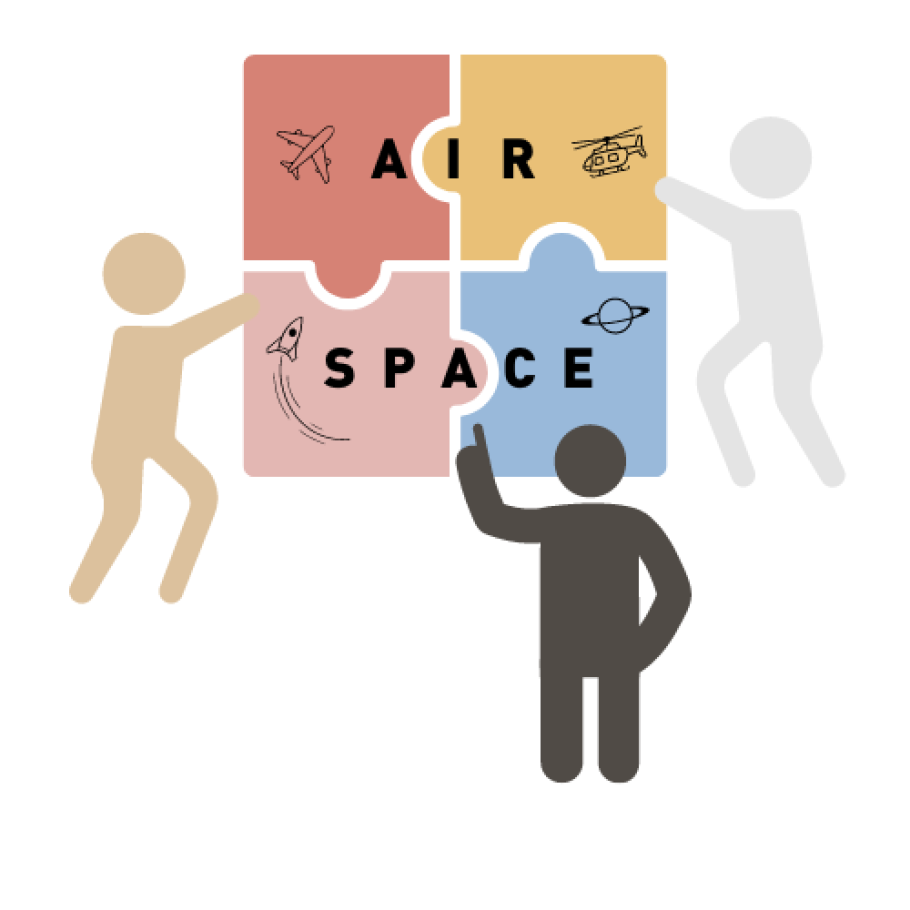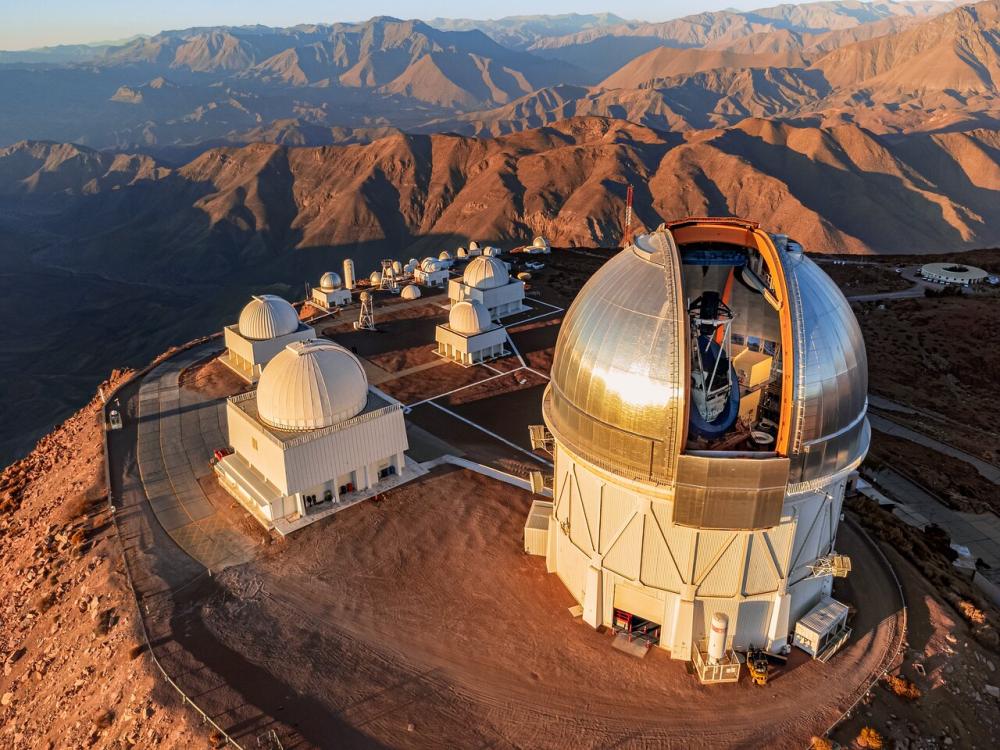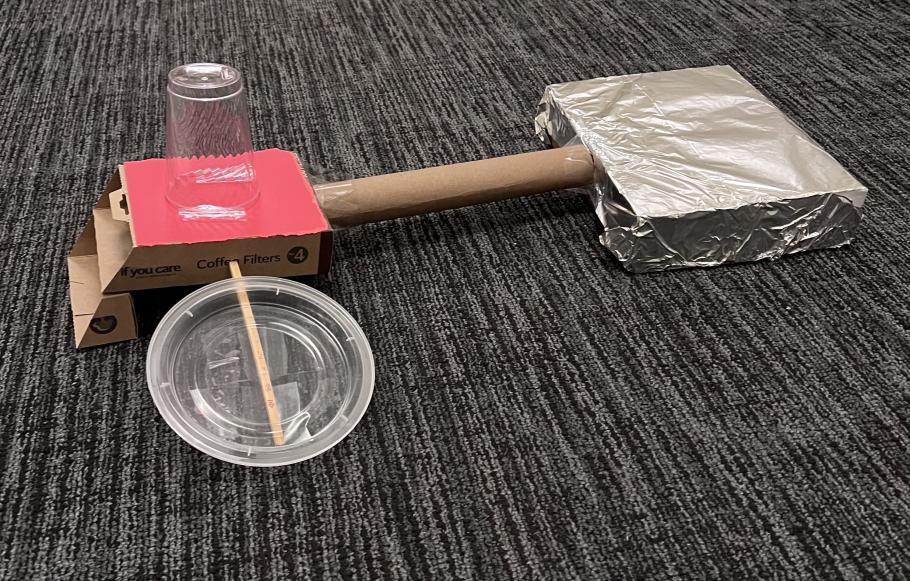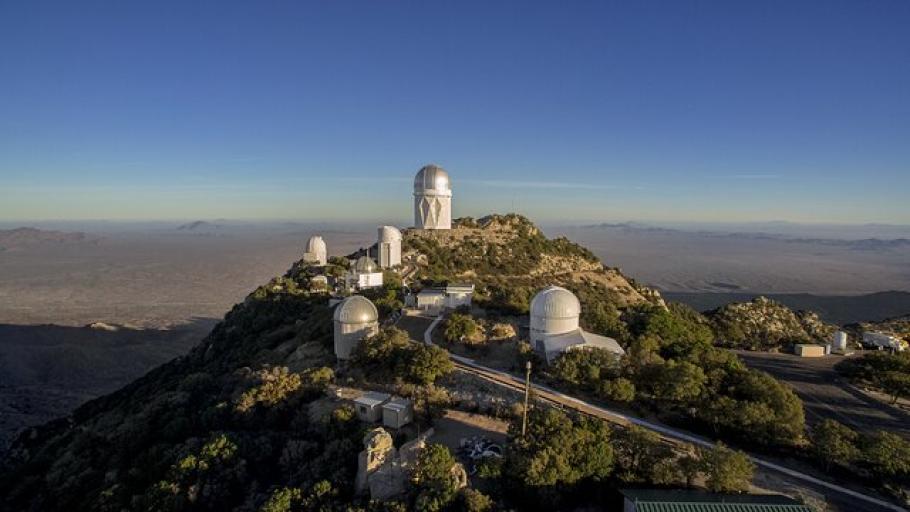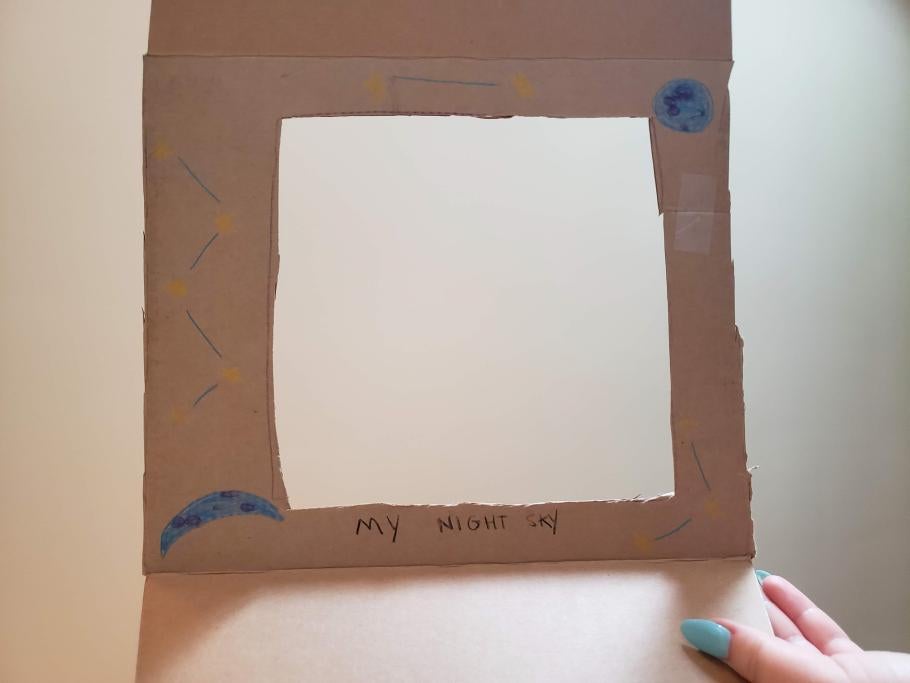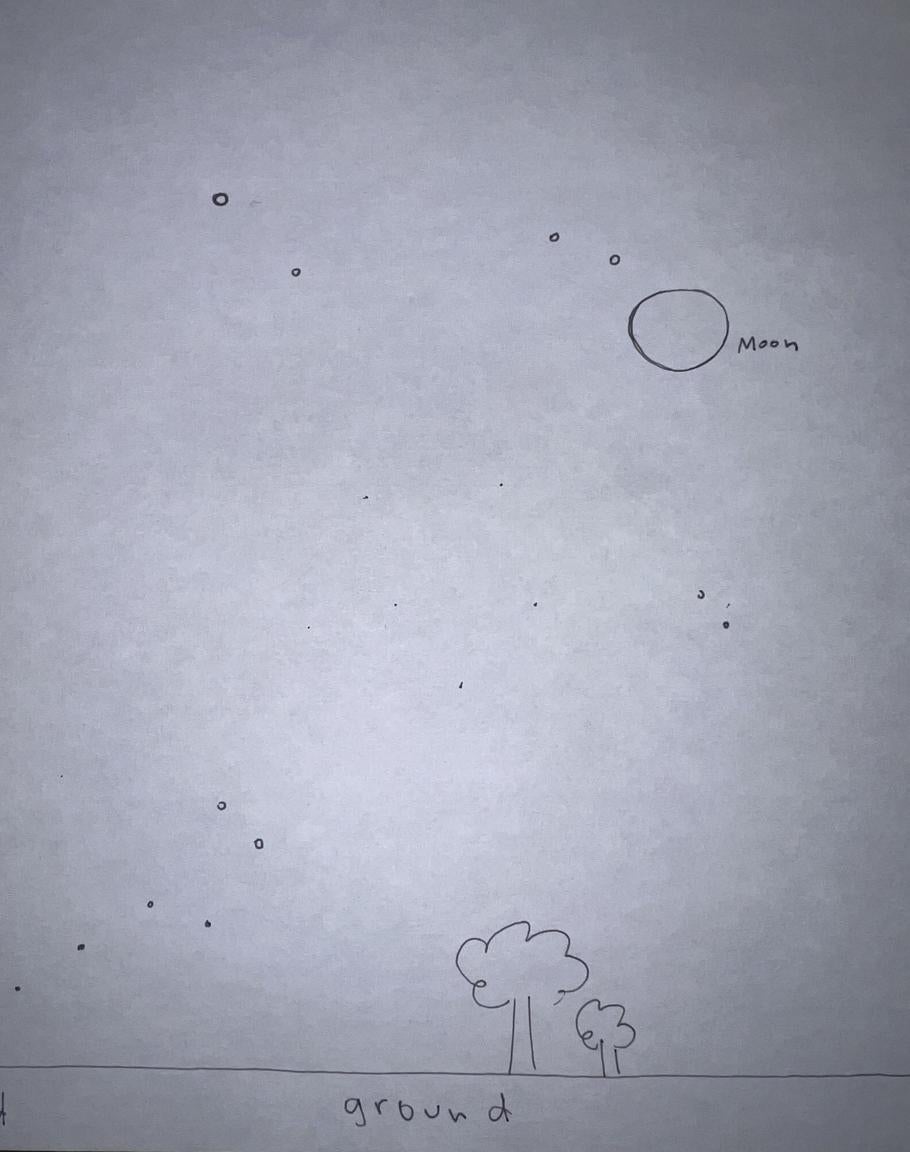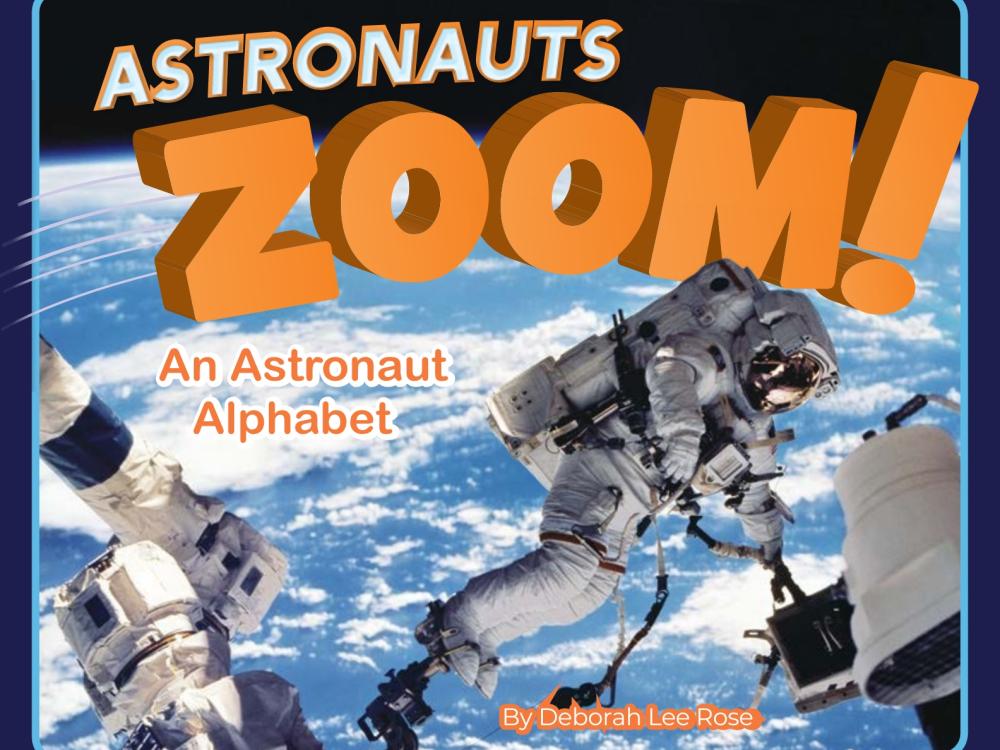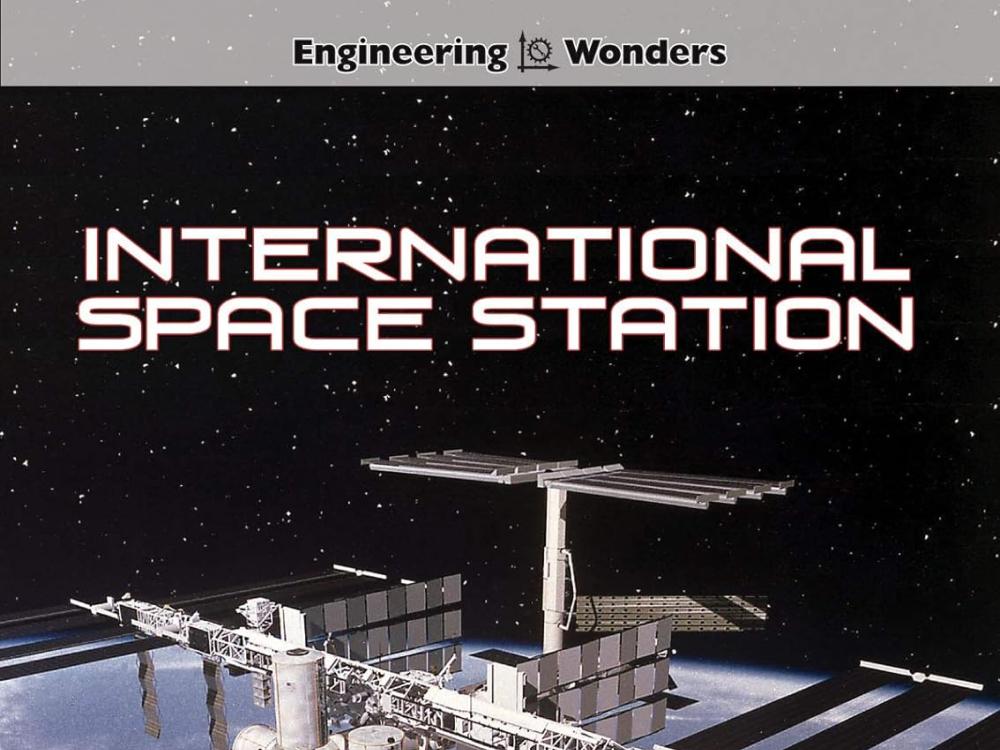Discover how people from all corners of the world work as a team to share their ideas and talents to push forward air and space innovations!
Quick Activity: What does teamwork look like?
Think about a time you were on a team. Were you on a sports team? Did you work on a team in class?
What was different about working on a team and working by yourself?
What does teamwork look like? Grab a piece of paper and a pencil and draw what you think great teamwork looks like.
International Teamwork in Air and Space
Activity: Create a Space Station as a Team
Listen to a story told by museum educator Ann Caspari about three friends who learn about the International Space Station and then collaborate to build one together.
Then it's your turn! Follow the instructions below and work together with your family members to create your own space station.
Materials You'll Need:
- Recycled materials, like boxes, yogurt cups, plastic food containers and paper tubes
- Scissors
- Tape
- Optional: paper, markers
Step 1: Watch the video, "Building Our Home Among the Stars" and the Craft Time portion at the end of the video.
Step 2: Plan your space station with your family members. Remember, good teamwork includes talking to each other.
- Decide which parts of the station your team members will make:
- Solar panels - used to collect sunlight for energy
- Sleeping area
- Laboratory
- Docking station - places where spaceships can connect
Step 3: Choose the recycled materials you'll use and start building!
Step 4: Once each person's part is ready, connect your space station together. Use materials like paper tubes or chopsticks as connectors. You can continue to add to your space station, just like the real astronauts do with the International Space Station!
Step 5: Think about it! What was easy about working on a team? Were there any hard parts? Talk about these questions with your team.
Activity: Observatories around the World
When it comes to the night sky and learning more about our universe, scientists and astronomers around the world work together, share telescopes and the information they gather from these telescopes.
For this activity, your family will make observations of the different parts of the night sky and share them with each other.
Materials You'll Need:
- Thick paper or cardboard
- Scissors
- Markers, pens
- White printer paper
- Pencil
- Tape
Step 1: Create your dark sky viewer that you'll use to observe the night sky.
- Take your thick paper or cardboard and hold it up to your face to figure out how big of an opening you'll need to see the night sky with two eyes.
- Draw a rectangle for that opening and then cut the opening out with scissors.
- Use tape to put your viewer together and make it sturdy.
Step 2: Gather your sky watching materials - your sky viewer, a piece of paper and pencil for drawing your observations and a hard surface for writing, like a book or magazine.
Step 3: Choose your observation spot.
- On a clear evening after the sun has set, go outside with your grown up and choose a part of the night sky you want to observe.
- Make a plan with your family members on which part of the sky you'll observe. Use objects like trees, houses, power lines or street signs to mark the area of the sky you'll be observing.
- Tip: you can decide if you want to observe the same part of the sky and compare what you see, or observe different parts of the sky and put your observations together.
Step 4: Observe the sky.
- Look through your sky viewer for a few minutes. What bright objects do you see in the sky?
- When you're ready, use your piece of paper to mark what you saw in the sky. You can think of the shape of the paper as the shape of your viewer to help you figure out where to put the marks.
- Tip: Draw a line across the bottom of your paper to mark the ground. You can also draw some of the landmarks you used to mark your sky viewing area, like a tree or building.
Step 5: Share your observation with your family members! What do you notice when you put your observations together?
Story Time Recommendations
Spotlight Story: Whirly Girls, International Women Helicopter Pilots
- The Whirly Girls is an international organization for women who are helicopter pilots. The club was created to build interest in women to learn the mechanics of helicopter flying and to provide scholarships for women pilots.
- Whirly Girl pilots were also on standby in case people needed them to fly helicopters in an emergency situation.
- The club was started to form a community for all women, no matter their location, religion, or race.
- In 1955, there were only 13 members, including the founder, Jean Ross Howard Phelan. These first members came from the United States, France, and Germany. Now, there are over 2,000 members within the organization, representing 49 different countries.
- Every member was awarded a Whirly Girl number and medallion when initiated into the organization. They still continue this tradition to this day.
- They continue to give scholarships, mentorship, and opportunities for women!
- Think about it! Is there a club or group that you belong to? What are some favorite things that you and your group members enjoy doing together?
